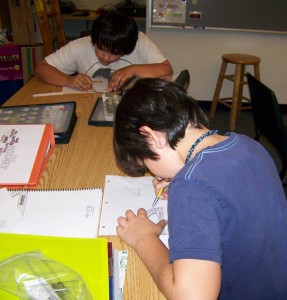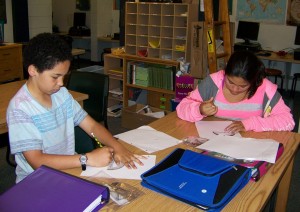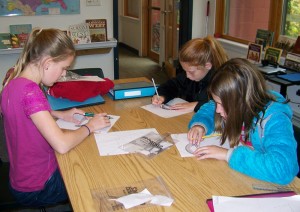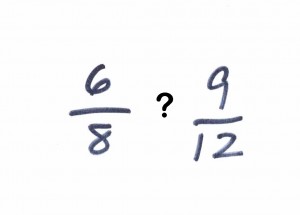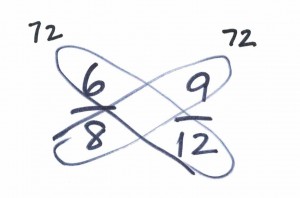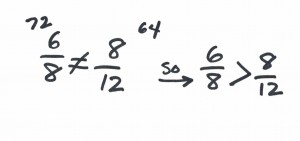Back in mid-September, we described making and flying gliders in this blog. We averaged the data we collected from their flights, as that was one of the math concepts that we were trying to deepen and secure.
This week, we returned to the project to take it a bit further. Tony had done this sort of thing in the science room with students for many years, and he offered to come in and join us when we created “darts” and used PVC-pipe launchers to send them flying. After discussing it, we decided that having the students build the launchers would be a wonderful learning experience but would take more time than we could give it, so Tony built them for us and gave students a short explanation of the construction process. Because he used pieces of yardsticks for the track that directs the flight of the dart (or glider), students were able to gather data about how far back they were pulling the rubber band that powered the flight. The launch arm can be raised or lowered, so our next step when we return to this activity in a few weeks will be to measure and record the launch angle in order get the desired result — maximum distance or success at hitting a target, depending on our goal. We will launch gliders as well as darts, as the two will (should!) behave quite differently from each other.
In anticipation of working with launch angles, we spent some time in math class with protractors. Students became familiar with “benchmark” angles of 90 degrees and 45 degrees to help with self-checking and estimation. We reviewed (or for some, introduced) the skills required to use a protractor to measure and draw angles. We found that any quadrilateral that we drew had an angle sum of 360 degrees and talked about why. Some students remembered discovering last year that all triangles have an angle sum of 180 degrees. We’ll take this further when we do more geometry after Conference Week.
We took advantage of Tony’s visit to do some singing with him, too. We’ve been having a weekly sing in our building on Wednesday mornings, and it’s been a wonderful way to begin the middle of the week. If your child has come home singing fragments of “I’m My Own Grandpa” or “This Land is Your Land” — that’s why.
On the other hand, we hope your child is NOT bringing home any of the racist terms or profanity that we are encountering as we read To Kill A Mockingbird to the class. It’s a powerful story, and we are just getting into the court case that is the central event. We have started discussing what seems to be a theme in story — belief versus reality. Although it clearly applies to Jem and Scout’s characterization of their neighbor “Boo” Radley, we will soon see that it’s a theme which will emerge in the court case as well. And if you haven’t read this book recently, you might want to re-visit it yourselves. We’ll be seeing the film after we have completed the book.

